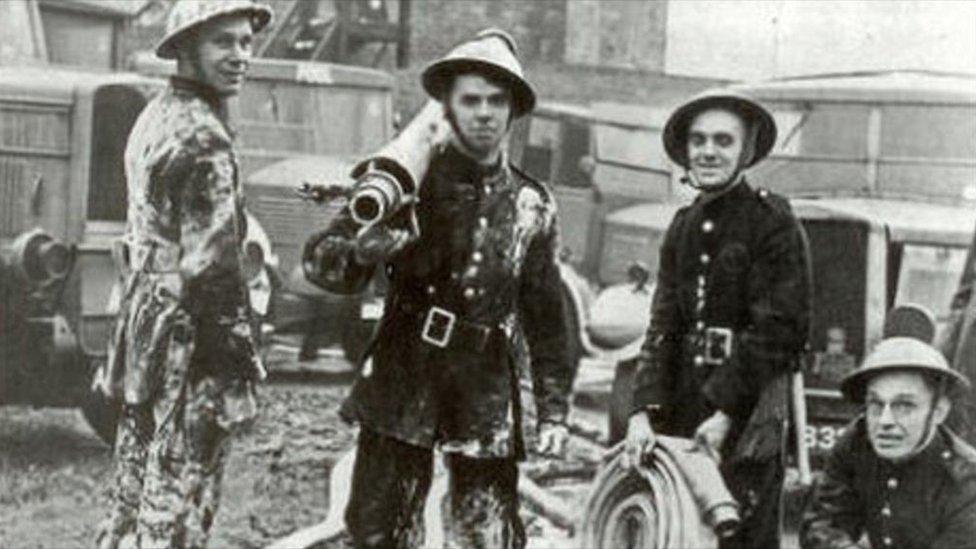Nottingham blitz: 'The night they saved the city's spirit'
- Published
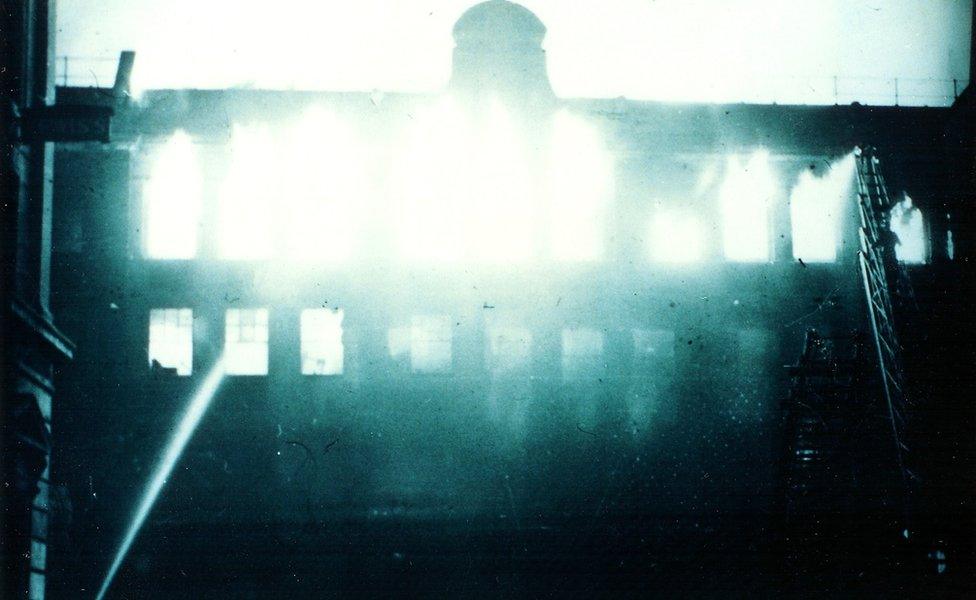
Bombs set several factories ablaze, stretching firefighting resources to the limit
Eighty years ago, with Nottingham ablaze and emergency teams stretched to the limit, there were fears the city's oldest and largest church might have to be sacrificed. So how did St Mary's, which stands proudly today, escape the destruction?
"Will someone help me save my church!" cried Bishop Neville Talbot to fire crews, as an incendiary bomb burned through St Mary's roof.
The night of 8 and 9 May 1941, 80 years ago, saw the heaviest raid on Nottingham, with 159 people killed.
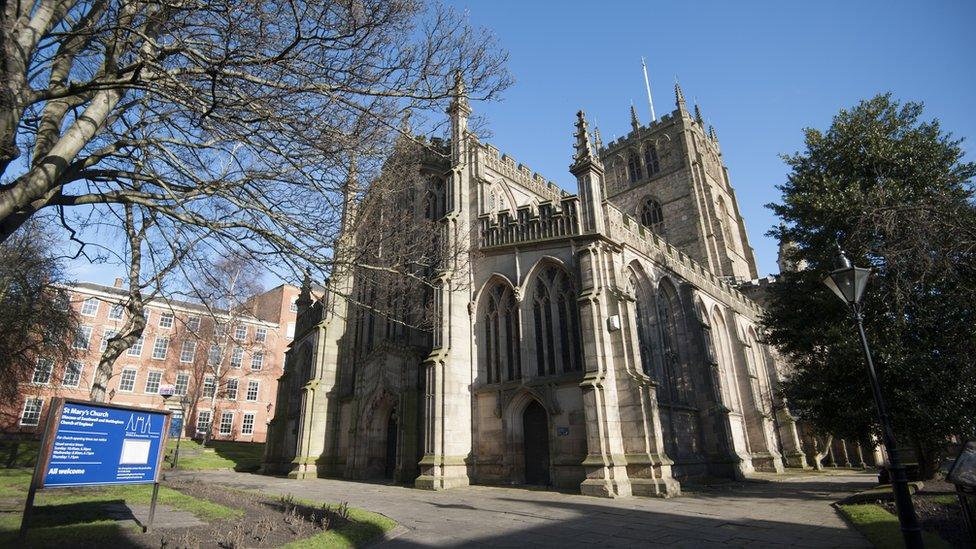
St Mary's has dominated the centre of Nottingham for centuries
During the winter and spring of 1940 and '41, the German Luftwaffe systematically bombed dozens of UK cities.
David Needham, author of Battle of the Flames, which chronicles the "Nottingham Blitz", said what came next was almost inevitable.
"It sounds harsh but Nottingham was kind of overdue a big raid," he said.
"The Luftwaffe had attacked many of the biggest cities and, considering its size, it was odd Nottingham had escaped."
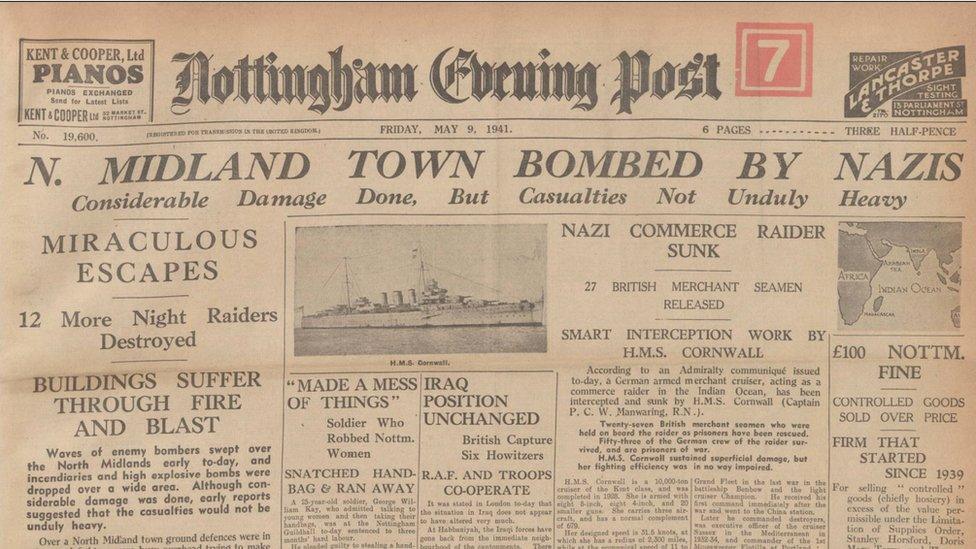
Wartime censorship meant even the local paper could only refer to the raid as hitting a 'North Midland town'
But that changed on the night of 8 May, when more than 100 bombers targeted the city.
Along with the 1,100 high explosive bombs, sleek metal incendiaries were dropped, designed to burst into flames upon landing and notoriously difficult to extinguish.
It was one of these which buried itself in St Mary's roof. A fire began to lick at its timbers.
Mr Needham said: "Bishop Talbot asked for help but buildings all around were on fire [and] the crews and equipment were working flat out.
"Wardens went up on the church roof but, with a small pump, couldn't get to the fire."
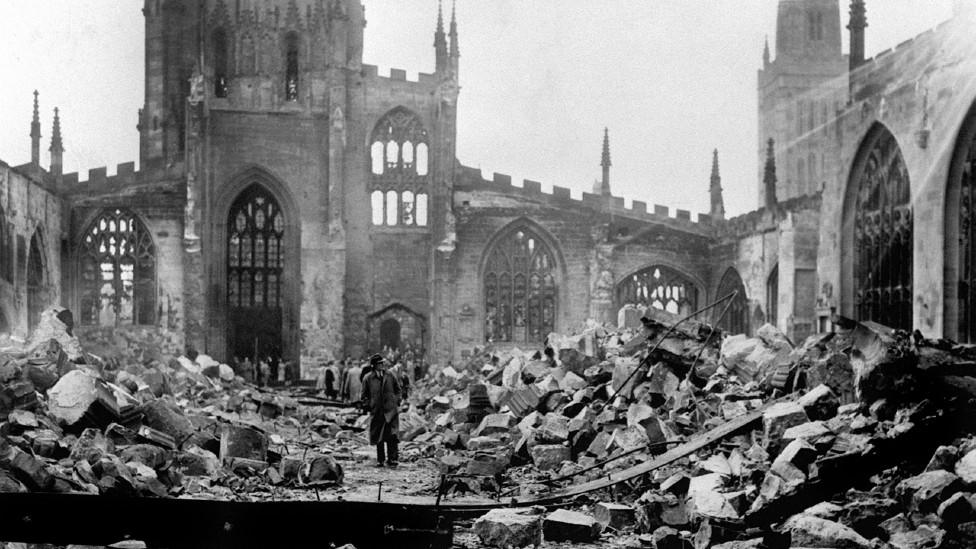
St Mary's came close to sharing the fate of Coventry Cathedral, also hit by incendiaries
For a moment if looked as if St Mary's - parts of which date back to the 14th Century - would share the fate of Coventry Cathedral, destroyed by incendiaries six months earlier.
But a churchwarden, recorded only as Dr Blandy, had more luck.
He found two firemen, Reg Miller - who had only moved to Nottingham four weeks before to get away from the London Blitz - and Chris Raybould, who agreed to help.
Even then, it seemed like fate was against them.
Mr Needham said: "They got a ladder and turntable through the narrow streets but the water did not reach the fire.
"Somehow they found more hoses and put links together to tackle the flames from inside the church.
"They got the better of the fire and stayed there even when a high explosive bomb landed close enough to make the ground shake."
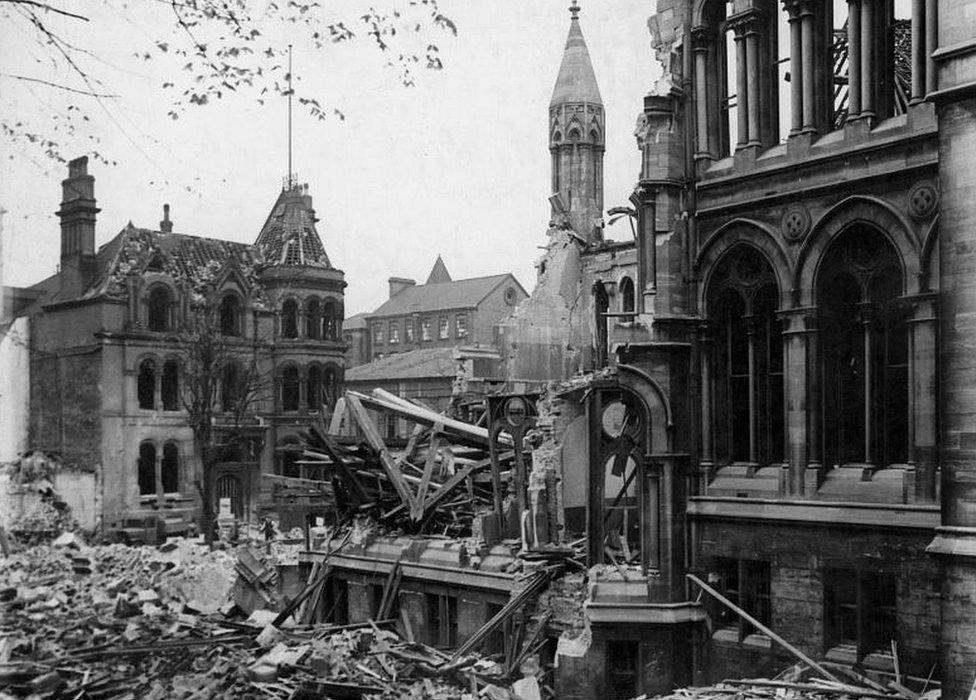
University College Nottingham's ornate buildings suffered a direct hit, but casualties were light
Other places were not so lucky. A direct hit to the Co-op bakery on Meadow Lane killed 48 employees and one member of the Home Guard.
The areas of Sneinton, Carlton, Colwick and West Bridgford were most affected and Mr Needham said water from two reservoirs was needed to bring the fires under control.
Twelve firefighters, or civil defence personnel, were among those killed.
The Nottingham Post of 9 May carried reports of a raid on a "North Midlands town", emphasising the "indiscriminate natures of the bombing".
Alongside the depictions of cheerful blitz spirit and determined workers, it admitted the horrors which had taken place.
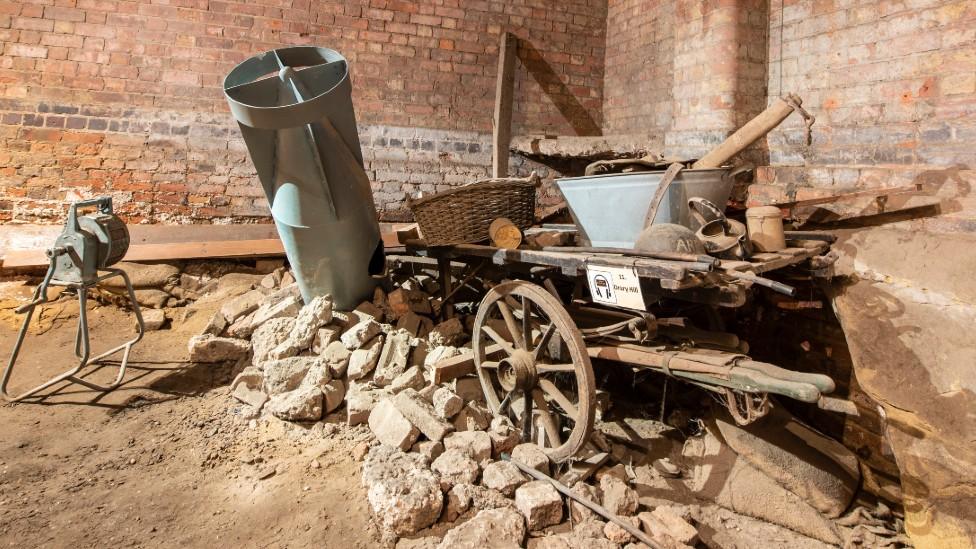
Unexploded bombs proved to be a hazard for weeks after the raid
In one street, a man and his five-year-old son had been killed.
The paper recorded: "The man was blown through the roof and his body was brought down from the damaged roof of an adjoining house by a rescue squad.
"His wife, who was out nursing at the time, returned to find her house a heap of ruins."
For the same day, the logbook of the William Booth school recorded "windows out, glass and soil everywhere. No children came".
The head teacher and Mr Brady the air raid warden worked until 11:00 BST putting out a fire in the roof.
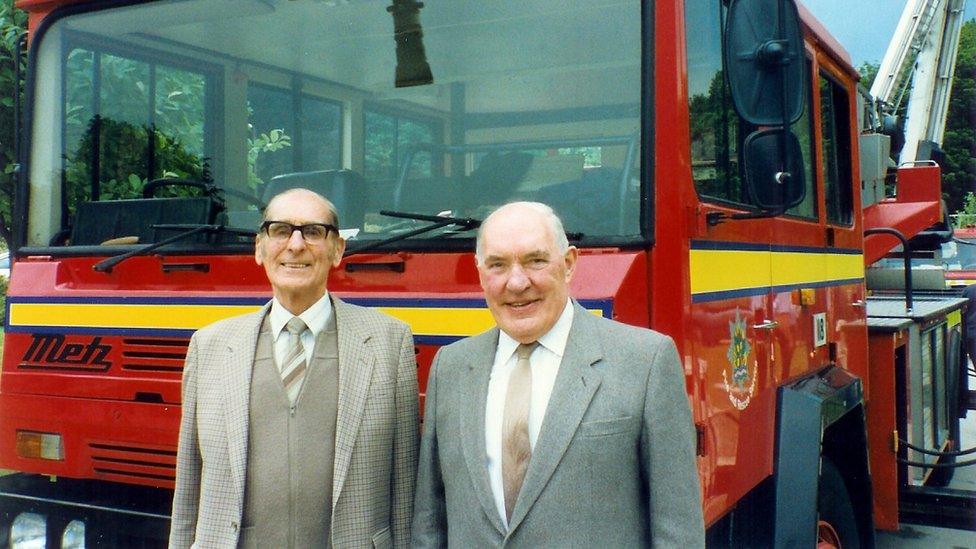
Reg Miller (left) and Chris Raybould in 1991 on the 50th anniversary of the raid
Astonishingly, the school reopened after the weekend - though the log said "only 41" children returned - just in time for "an unexploded bomb discovered in the Church Yard - almost opposite the Infants' entrance".
Mr Needham said: "Dozens of acts of bravery from firemen, wardens and members of the public saved many lives, houses and factories that night.
"But the quick thinking and determination of Reg and Chris, by saving St Mary's, could be said to have saved the city's spirit."
In some ways Nottingham was fortunate.
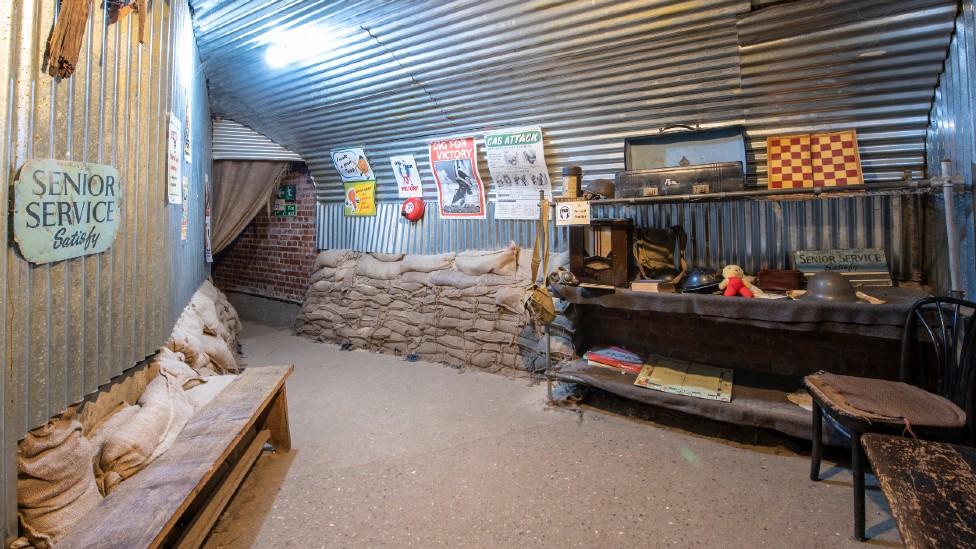
Nottingham was fortunate that historic caves below the city made ideal air raid shelters, similar to this reconstruction
It had a pioneering Air Raid Precaution network which responded efficiently, and its existing network of rock-cut tunnels made ideal bomb shelters.
Also, the Luftwaffe's radio wave navigation beams were successfully deflected and a series of distraction fires meant many bombs fell in the countryside.
Mr Miller and Mr Raybould both served as firefighters in other cities and were awarded the Defence Medal at the end of the war.
Both came back to live in Nottingham, the city they helped protect, and remained firefighters for the next 30 years.
On the 75th anniversary of the raid, the church they helped salvage - St Mary's - saw the unveiling of a memorial to the 35 men and two women who died on fire service duty between 1940 and 1999.
A service of remembrance will be held there on Sunday.

Follow BBC East Midlands on Facebook, external, on Twitter, external, or on Instagram, external. Send your story ideas to eastmidsnews@bbc.co.uk, external.
Related topics
- Published27 April 2021
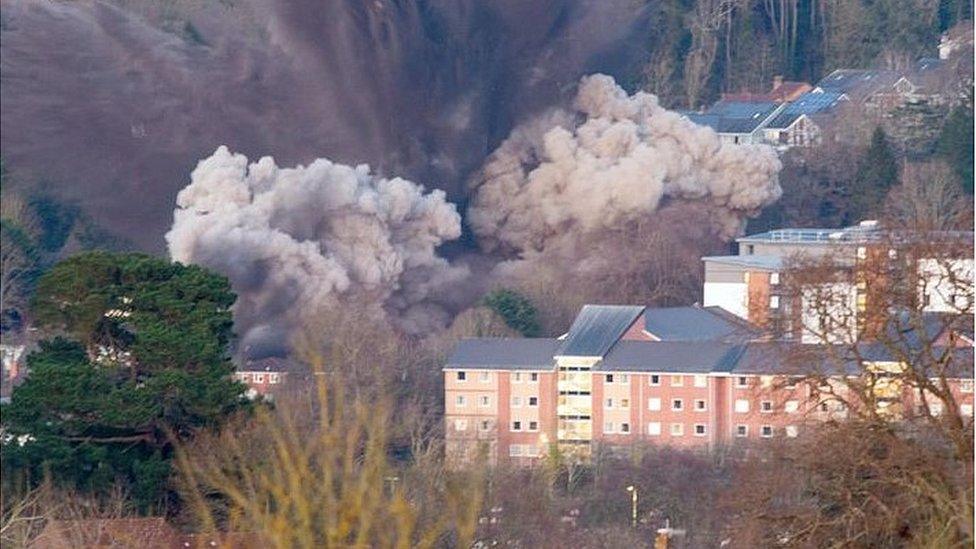
- Published8 May 2016
